Business
Topshop returns to the high street, but can it get its cool back?
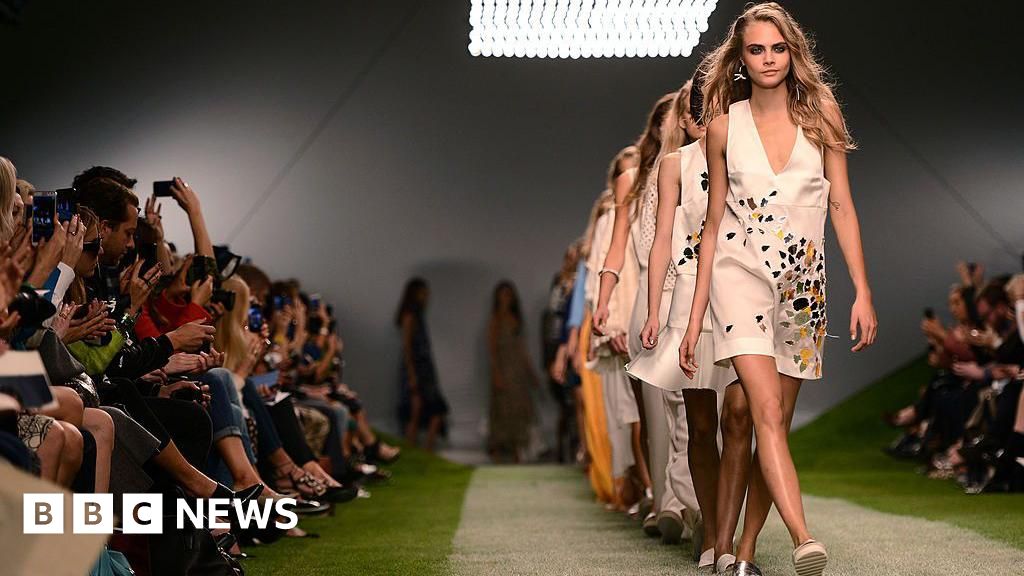
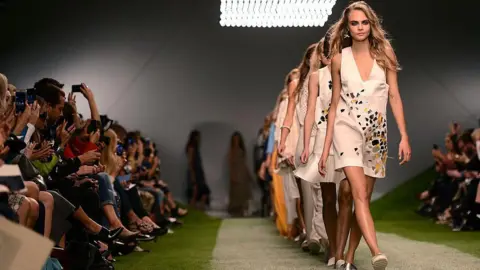 Karwai Tang/WireImage)
Karwai Tang/WireImage)For teenage girls like me in the 2000s and 2010s, going into a Topshop store was like being transported into a fantasy world.
There was music! Makeup! And fashion! All under one roof – with Topshop clothes often found on the pages of Vogue alongside high-end couture.
But somewhere along the way, things went wrong.
“Topshop lost its cool,” said fashion journalist Amber Graafland.
“And when that happens, it’s hard. Fashion is a fickle beast, people move on quickly.”
Then in 2020, its owner, Sir Philip Green’s Arcadia group, collapsed. All of Topshop’s physical stores shut soon after.
But Topshop is now launching a major comeback.
Standalone stores are returning to the High Street, Michelle Wilson, managing director of Topshop and Topman, confirmed to BBC News.
And on Saturday, Topshop is hosting its first catwalk show for seven years in Trafalgar Square. We’ve been told long-time brand muse model Cara Delevingne will be there.
It seems absence (and nostalgia) makes the heart grow fonder. As rumours of Topshop’s imminent return have been met by a wave of affection on social media, particularly among millennials and Gen-Z.
But industry experts say it will take more than nostalgia to make Topshop 2.0 a success.
‘They need to entice younger girls’
 Shutterstock
ShutterstockOne of the challenges that Topshop will face is attracting a new wave of shoppers through the doors.
Its previous core following are now women in their late 20s and 30s, but it can’t just rely on them, says Graafland.
“They will need to work hard to entice younger girls in,” she said.
What might help, though, is the nostalgia trend that has taken over social media feeds and High Streets in recent months (Joni jeans, anyone?)
Topshop’s team, for their part, think they can attract both older and newer groups.
“We want to deliver for those that are nostalgic for a brand that they felt like they lost,” Wilson said.
“But we absolutely want to appeal to a new demographic as well.”
Then, there’s the fashion. For me, shopping in Topshop as a teenager made me feel like the ‘it girl’.
On Saturdays, you’d breeze through racks to find the one item that justified taking money out of your barely-there bank balance.
When you bought it, you’d act nonchalant. “Oh this old thing? It’s from Topshop,” you’d tell your school friends, as if you could afford it all the time.
And I wasn’t the only one. Huge crowds would throng to the London landmark store to witness the launch of new ranges from A-listers like Beyoncé and Kate Moss.
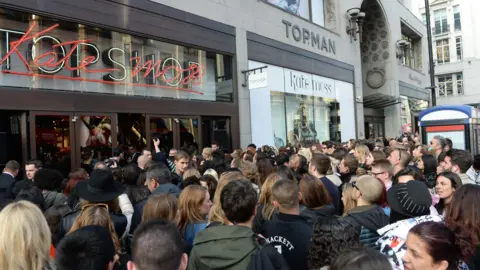 Getty Images
Getty ImagesIn the 90s and 00s, designers “used to laugh at High Street fashion”, said Wayne Hemingway, a designer and co-founder of Red or Dead.
“They couldn’t keep up with the trends. Topshop was the only one that did.”
Hemingway, who worked with Topshop through its heyday, said a large part of its success was down to the team behind it, including Jane Shepherdson, its hugely influential brand director.
“They brought in second hand clothes for example, that’s normal now, but back then it was seen as absolutely radical to have a shopping department store doing that,” he said.
“You had the collaborations, the London Fashion Walk catwalk, all this design and excitement at High Street prices. It was so fresh, everyone wanted to be part of it.”
But over time, what people were looking for changed – and Topshop didn’t always keep up, said Graafland.
“They offered that unique London look. Then the girls who shopped there grew up, and they didn’t want that look anymore,” she said.
“You cannot afford to take your finger off pulse for one minute in fashion.”
She added that Topshop 2.0 would benefit from the fact its core aesthetic – the London girl look – is back in style, and that not many other retailers are offering it.
“If you look at the High Street now, there’s a strong Spanish presence, with the likes of Zara, and also a Swedish presence with H&M. When Arcadia collapsed, we lost that Britishness,” she said.
She added that a lot of the High Street is “playing it safe right now”, and that could also work in Topshop’s favour if can “get that cool edge back”.
Topshop’s team is confident that it can still win over shoppers with its trademark London-based swagger.
“We still think there’s a huge gap in the market for that,” Wilson said.
“The most important thing that we won’t forget, and maybe got forgotten about towards the end of the previous era, is that product is everything.
“It has to be the best quality product, the most fashionable product for our customer base, and bringing that at good value.”
And then there are the prices
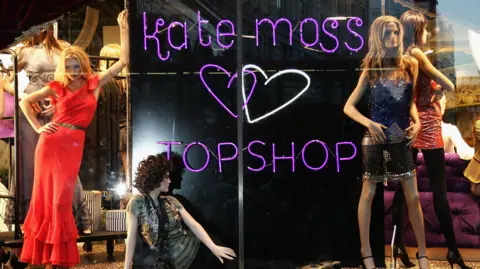 Getty Images
Getty ImagesTopshop’s popularity peaked in the heady years before the cost of living crisis. Its team are aware of the stiff competition it now faces.
A pair of Topshop jeans will easily set you back about £50. Chinese fast fashion giant Shein offers them for about £17.
“If we’re just comparing Shein, then yes, I think most brands on the planet are at a higher price point than Shein,” Wilson said.
But she added: “We know that when we offer great fashion and great value for money then the product does sell very well, so absolutely no concerns about that to be honest.”
While Topshop might not churn out new pieces at the breakneck speed of its online-only rivals, in the past, it’s still faced questions over its environmental record.
For younger shoppers, this can be an important factor in deciding where to go.
Wilson, however, indicates the higher prices reflect a more sustainable model.
The firm’s focus, she said, is very much “on the livelihoods of people within the supply chain that we partner with and also the environmental impacts of the brand”.
‘There’s got to be a buzz around it’
 PA Media
PA MediaAfter Sir Green’s retail empire collapsed, the Topshop brand was bought by Asos.
You can still buy the items online on their website – but now, in-store shopping is coming back.
Topshop’s return to the High Street starts this month, with products set to be available to buy in certain stores.
But of course, the real interest is in the standalone stores which Wilson said are “definitely” coming back.
She wouldn’t give a date for their return, but said the aim was to open stores across the nation.
Topshop is choosing to relaunch at a time when the High Street continues to struggle. Just days ago, fashion accessories chain Claire’s collapsed into administration.
But Wilson said lessons have been learnt after what happened to Topshop 1.0.
“We’re just making sure we do it in the right way so that we don’t over-expand ourselves,” she said.
As for the stores themselves, it remains to be seen if they’ll have the same vibe as before.
For me, it was where I met friends after school, tried on eye shadow for the first time, and listened to DJs pumping out dance music.
In some stores you were able to order skinny caramel lattes, get your hair and nails done, and maybe even get a piercing or two if your mum wasn’t watching.
“Fashion is only part of the story. It’s about selling a lifestyle and an experience,” Graafland said. “There’s got to be that buzz around it.”
Topshop’s team say they won’t necessarily be replicating what it used to do, but rather, “finding ways to bring that into 2025 and do interesting things”.
Overall, the hopes are high.
“They will get the girls to the stores, I don’t doubt it,” Graafland said.
“The question is whether they can keep them there.”
Business
Stock Market Live Updates: Sensex, Nifty Hit Record Highs; Bank Nifty Climbs 60,000 For The First Time
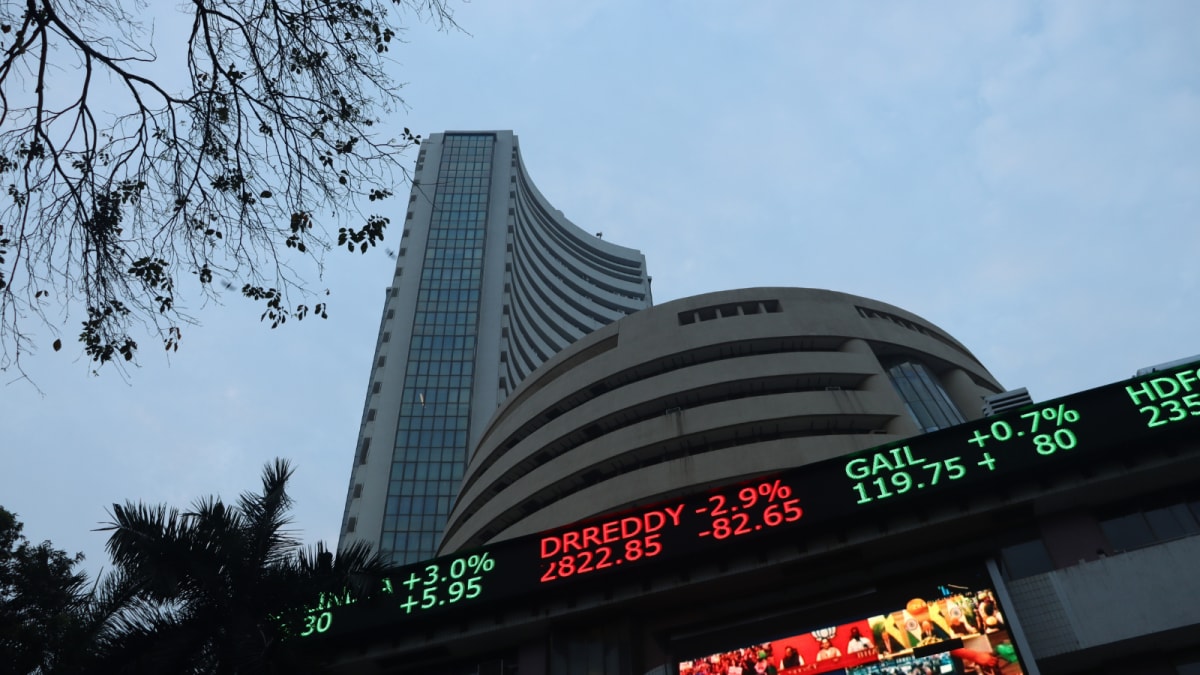
Stock Market News Live Updates: Indian equity benchmarks opened with a strong gap-up on Monday, December 1, touching fresh record highs, buoyed by a sharp acceleration in Q2FY26 GDP growth to a six-quarter peak of 8.2%. Positive cues from Asian markets further lifted investor sentiment.
The BSE Sensex was trading at 85,994, up 288 points or 0.34%, after touching an all-time high of 86,159 in early deals. The Nifty 50 stood at 26,290, higher by 87 points or 0.33%, after scaling a record intraday high of 26,325.8.
Broader markets also saw gains, with the Midcap index rising 0.27% and the Smallcap index advancing 0.52%.
On the sectoral front, the Nifty Bank hit a historic milestone by crossing the 60,000 mark for the first time, gaining 0.4% to touch a fresh peak of 60,114.05.
Meanwhile, the Metal and PSU Bank indices climbed 0.8% each in early trade.
Global cues
Asia-Pacific markets were mostly lower on Monday as traders assessed fresh Chinese manufacturing data and increasingly priced in the likelihood of a US Federal Reserve rate cut later this month.
According to the CME FedWatch Tool, markets are now assigning an 87.4 per cent probability to a rate cut at the Fed’s December 10 meeting.
China’s factory activity unexpectedly slipped back into contraction in November, with the RatingDog China General Manufacturing PMI by S&P Global easing to 49.9, below expectations of 50.5, as weak domestic demand persisted.
Japan’s Nikkei 225 slipped 1.6 per cent, while the broader Topix declined 0.86 per cent. In South Korea, the Kospi dropped 0.30 per cent and Australia’s S&P/ASX 200 was down 0.31 per cent.
US stock futures were steady in early Asian trade after a positive week on Wall Street. On Friday, in a shortened post-Thanksgiving session, the Nasdaq Composite climbed 0.65 per cent to 23,365.69, its fifth consecutive day of gains.
The S&P 500 rose 0.54 per cent to 6,849.09, while the Dow Jones Industrial Average added 289.30 points, or 0.61 per cent, to close at 47,716.42.
Business
South Korea: Online retail giant Coupang hit by massive data leak
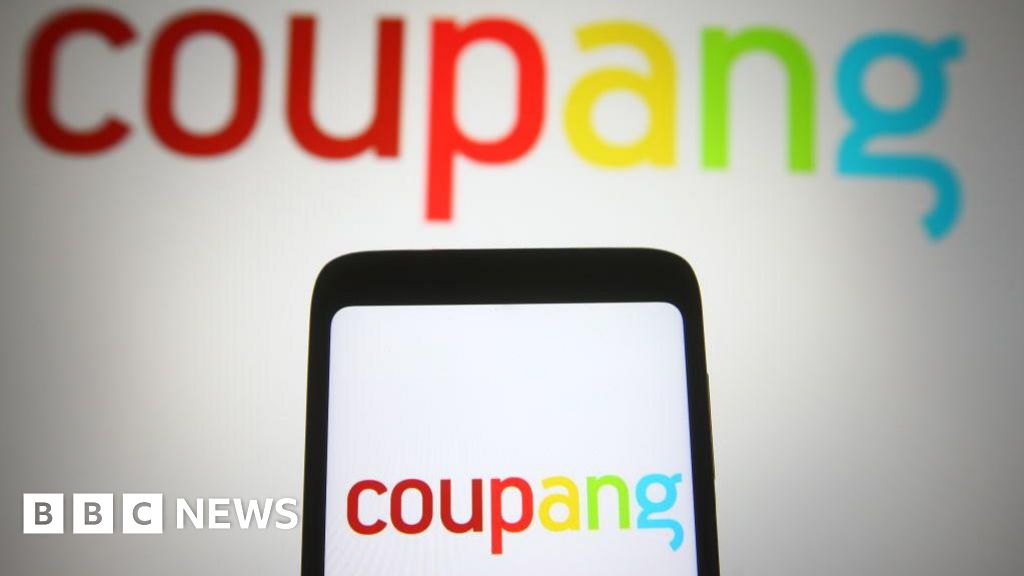
Osmond ChiaBusiness reporter
 Getty Images
Getty ImagesSouth Korea’s largest online retailer, Coupang, has apologised for a massive data breach potentially involving nearly 34 million local customer accounts.
The country’s internet authority said that it is investigating the breach and that details from the millions of accounts have likely been exposed.
Coupang is often described as South Korea’s equivalent of Amazon.com. The breach marks the latest in a series of data leaks at major firms in the country, including its telecommunications giant, SK Telecom.
Coupang told the BBC it became aware of the unauthorised access of personal data of about 4,500 customer accounts on 18 November and immediately reported it to the authorities.
But later checks found that some 33.7 million customer accounts – all in South Korea – were likely exposed, said Coupang, adding that the breach is believed to have begun as early as June through a server based overseas.
The exposed data is limited to name, email address, phone number, shipping address and some order histories, Coupang said.
No credit card information or login credentials were leaked. Those details remain securely protected and no action is required from Coupang users at this point, the firm added.
The number of accounts affected by the incident represents more than half of South Korea’s roughly-52 million population.
Coupang, which is founded in South Korea and headquartered in the US, said recently that it had nearly 25 million active users.
Coupang apologised to its customers and warned them to stay alert to scams impersonating the company.
The firm did not give details on who is behind the breach.
South Korean media outlets reported on Sunday that a former Coupang employee from China was suspected of being behind the breach.
The authorities are assessing the scale of the breach as well as whether Coupang had broken any data protection safety rules, South Korea’s Ministry of Science and ICT said in a statement.
“As the breach involves the contact details and addresses of a large number of citizens, the Commission plans to conduct a swift investigation and impose strict sanctions if it finds a violation of the duty to implement safety measures under the Protection Act.”
The incident marks the latest in a series of breaches affecting major South Korean companies this year, despite the country’s reputation for stringent data privacy rules.
SK Telecom, South Korea’s largest mobile operator, was fined nearly $100m (£76m) over a data breach involving more than 20 million subscribers.
In September, Lotte Cards also said the data of nearly three million customers was leaked after a cyber-attack on the credit card firm.
Business
Agency workers covering for Birmingham bin strikers to join picket lines

Agency workers hired to cover Birmingham bin strikers will join them on picket lines on Monday, a union has said.
A rally will be held by Unite The Union at Smithfield Depot on Pershore Street, Birmingham, on Monday morning to mark the first day of strike action by agency refuse workers.
Unite said the Job & Talent agency workers had voted in favour of strike action “over bullying, harassment and the threat of blacklisting at the council’s refuse department two weeks ago”.
The union said the number of agency workers who will join the strike action is “growing daily”.
Strikes by directly-employed bin workers, which have been running since January, could continue beyond May’s local elections.
The directly-employed bin workers voted in favour of extending their industrial action mandate earlier this month.
Unite general secretary Sharon Graham said: “Birmingham council will only resolve this dispute when it stops the appalling treatment of its workforce.
“Agency workers have now joined with directly-employed staff to stand up against the massive injustices done to them.
“Instead of wasting millions more of council taxpayers’ money fighting a dispute it could settle justly for a fraction of the cost, the council needs to return to talks with Unite and put forward a fair deal for all bin workers.
“Strikes will not end until it does.”
-

 Sports1 week ago
Sports1 week agoWATCH: Ronaldo scores spectacular bicycle kick
-

 Entertainment1 week ago
Entertainment1 week agoWelcome to Derry’ episode 5 delivers shocking twist
-

 Politics1 week ago
Politics1 week agoWashington and Kyiv Stress Any Peace Deal Must Fully Respect Ukraine’s Sovereignty
-

 Business1 week ago
Business1 week agoKey economic data and trends that will shape Rachel Reeves’ Budget
-

 Tech6 days ago
Tech6 days agoWake Up—the Best Black Friday Mattress Sales Are Here
-

 Fashion7 days ago
Fashion7 days agoCanada’s Lululemon unveils team Canada kit for Milano Cortina 2026
-

 Tech6 days ago
Tech6 days agoThe Alienware Aurora Gaming Desktop Punches Above Its Weight
-

 Politics1 week ago
Politics1 week ago53,000 Sikhs vote in Ottawa Khalistan Referendum amid Carney-Modi trade talks scrutiny






